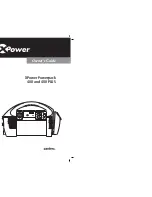
4.4
Positive or negative voltage can be obtained from this supply by grounding either
one of the output terminals or one end of the load. Always use two leads to connect
load to the supply, regardless of where the setup is grounded. This will eliminate
any possibility of the output current return paths through the power source ground
which would damage the line cord plug. This supply can also be operated upto
±300V DC above ground, if neither output terminal is grounded.
4.5
REMOTE SENSING :
Warning :
Do not Operate the Unit in 'REMOTE SENSE' mode without
ensuring proper 'REMOTE/ 4 TERMINAL' Connections. Serious
Damage to Unit or Equipment under test could result.
Remote sensing is used to maintain good regulation at the load and reduce the
degradation of regulation which could occur due to the voltage drop in the leads
betweeen the power supply and the load. Remote sensing is accomplished by
connnecting the load to remote sense terminals on the front panel. The leads from
the sensing( +S and -S) terminals to the load will carry much less current than the
load leads and it is not required that these leads be as heavy as the load leads.
However, they must be twisted or shielded to minimize noise pickup.
For reasonable lengths of load leads, remote sensing greatly improves the
performance of the supply. However, if the load is located at a considerable
distance from the supply, added precautions must be observed to obtain
satisfactory operation. Notice that the voltage in the load leads subtracts directly
from the available output voltage and also reduces the amplitude of the feedback
error signals that are developed within the unit. Because of these factors, it is
recommended that the drop in each load lead does not exceed 0.5Volts.
NOTE :
Due to the voltage drop in load leads, it may be necessary to
readjust the current limit in the remote sensing mode.
Observance of the precautions in para. 4.8 and 4.9 will result in a low dc output
impedance at the load. However, another factor that must be considered is the
inductance of long leads.This causes a high ac impedance and could affect the
stability of the feed back loop seriously enough to cause oscillations. If this is the
case, it is recommended that the following actions be taken:
a)
Adjust R6 to remove oscillations, or to achieve best possible transient
response for given long load lead configuration.
b)
If performing adjustment in step (a) above does not remove oscillation,
disconn-ect output capacitor C3 ( L1791-FP-CNT-0603 PCB ) and connect
a capacitor having similar characteristics (approximately the same capaci
tance, the same voltage rating or greater, and having good high frequency
characteristics) directly across load using short leads.
Readjust R6 as in step (a) above after making this change.
6
Summary of Contents for 1794
Page 1: ...Instruction Manual Model 1794 High Current Power Supply B PRECISION K ...
Page 36: ...TOP VIEW 33 ...
Page 37: ...BOTTOM VIEW OF MODEL 1790 1791 34 ...
Page 38: ...FRONT PANEL CONTROL PCB OF 1790 1791 35 ...
Page 39: ...POWER MODULE PCB OF 1790 1791 36 ...










































